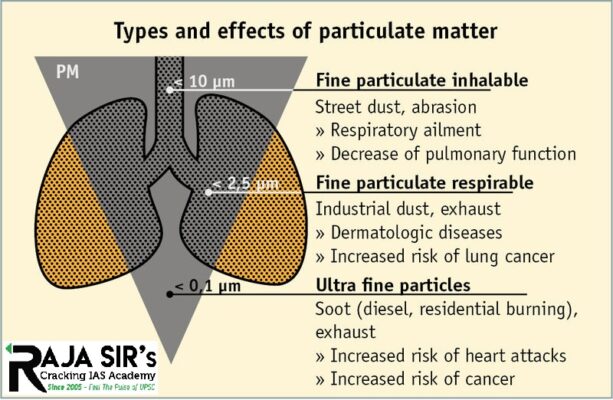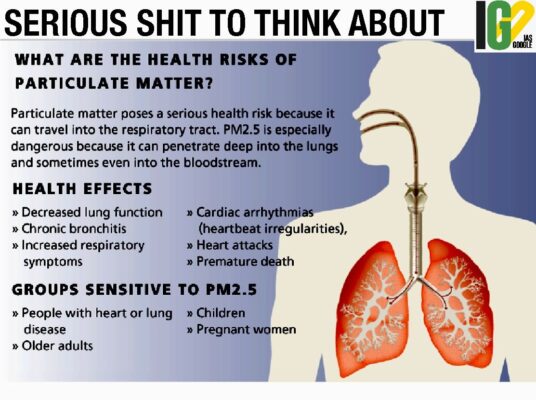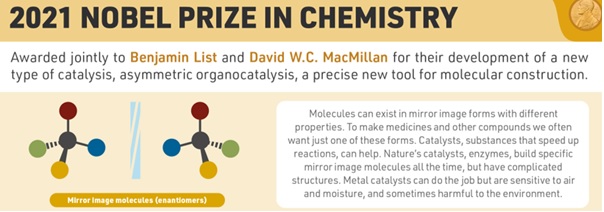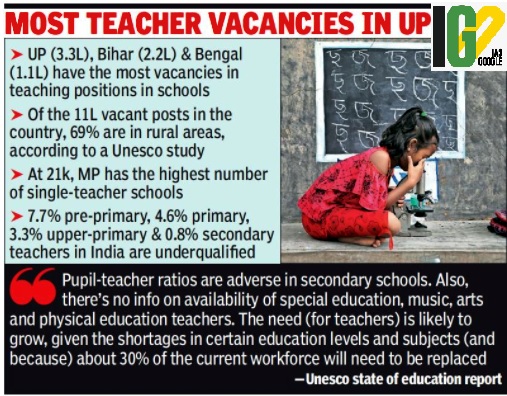- Home
- Prelims
- Mains
- Current Affairs
- Study Materials
- Test Series
 EDITORIALS & ARTICLES
EDITORIALS & ARTICLES
09th Oct 2021
WHY INDIA’S NEWEST TIGER RESERVE IN CHHATTISGARH IS SO IMPORTANT
National Tiger Conservation Authority (NTCA) approved the Chhattisgarh government’s proposal to declare the combined areas of the Guru Ghasidas National Park and Tamor Pingla Wildlife Sanctuary as a Tiger Reserve.
Highlights:








- The new Tiger Reserve is located in the northern part of Chhattisgarh, bordering Madhya Pradesh and Jharkhand.
- This will be the fourth Tiger Reserve in Chhattisgarh, after the Udanti-Sitanadi, Achanakmar, and Indravati Reserves.
- The proposal of the state government was considered by the 11th Technical Committee of the NTCA and approval was granted under Section 38 V(1) of The Wildlife (Protection) Act, 1972.
- As per the Tiger Conservation Plan, the State Government on the recommendation of the Tiger Conservation Authority, notifies an area as a tiger reserve.
- The Tiger Reserve will connect Jharkhand and Madhya Pradesh and provide a corridor for tigers to move between the Bandhavgarh and Palamau Tiger Reserves.
- Location: Surajpur district, Chhattisgarh
- Area: Over 60,850 hectares (608.5 sq. km).
- It was identified as part of Sarguja Jashpur Elephant Reserve in 2011.
- Its northern boundary is marked by the Moran River, eastern boundary is Bonga Nalla, and western boundary is Rihand River.
- Fauna: Asian elephants, Bengal tigers, Indian leopards, bears, Sambar deer, nilgai, chital, bison, four-horned antelope, chinkara, barking deer, etc.
- Location: Koriya district, Chhattisgarh
- Area: over 1,44,000 hectares (1,440 sq. km).
- It used to be part of the Sanjay National Park in undivided Madhya Pradesh. (60% of it falls under Chhattisgarh now, renamed as Guru Ghasidas National Park)
- It is in the mid of two prominent tiger reserves: Bandhavgarh Tiger Reserve in Madhya Pradesh and Palaman Tiger Reserve in Jharkhand.
- It was the last known habitat of the Asiatic cheetah in the country.
- Flora: Teak, Sal and Bamboo Trees, Gurjan, Palas, Tendu, Mahua etc.
- Fauna: Tigers, leopards, jackals, barking deer, spotted deer, wild boar, sloth bear, snakes such as cobra, python.
- Guru Ghasidas (1756–1850) was Guru (teacher) of the Satnampanth in the early 19th century in Chhattisgarh.
- He was born in Girodpuri, Balodabazar district, Chattisgarh.
- He established Satnami community in Chhattisgarh based on "Satnam" (meaning "Truth") and equality. His teachings and philosophy is similar to sikhism.
- He created a symbol of truth called "jaitkhambh" – a white painted log of wood, with a white flag on the top, which indicates the pillar of truth.
- He rejected the inequality and unfairness of the caste system prevalent in the 19th century India.

- The high emissions from U.P. were largely due to a significant share of PM2.5 emissions from solid-fuel use in households.
- U.P.’s PM2.5 emissions ranged from 588 to 976 kilo-tons (Kt) per year.
- Top emitting states: Uttar Pradesh, Maharashtra, Gujarat, Odisha, West Bengal, Madhya Pradesh, Bihar, Tamil Nadu, and Rajasthan.
- However, the states on the list of top polluters are ranked differently by the five sources. Only Uttar Pradesh is at the top of all lists.
- Lowest emitters: Jammu and Kashmir, Himachal Pradesh, Uttarakhand, North-eastern States of Arunachal Pradesh, Nagaland, Manipur, and Mizoram.
- PM 2.5, PM 10, NOx (nitrous oxides), SO2 (Sulphur dioxide), CO (Carbon Monoxide), NH3 (Ammonia), and NMVOC (Non-methane volatile organic compounds).
- Sources of pollutants: Agriculture waste burning, power utilities, industry, dust, transport and waste which account for nearly 95% of the sources of air pollution.
- Emissions Database for Global Atmospheric Research (EDGAR), maintained by the European Commission’s Joint Research Centre.
- Evaluating the Climate and Air Quality Impacts of Shortlived Pollutants (ECLIPSE), maintained by the International Institute for Applied Systems Analysis (IIASA).
- Regional Emission Inventory in Asia (REAS), maintained by the National Institute for Environmental Studies, Japan (NIES).
- Speciated Multipolluter Generator (SMoG), maintained by the Indian Institute of Technology (IIT Bombay).
- Spatially resolved pollution emission inventory for India, maintained by The Energy and Resources Institute (TERI).
- CEEW analysis found “significant variation” in the estimates of pollutants by various sources due to the way each agency calculated emissions and the data sources used.
- Estimating pollutant reductions will only be possible after having an official emission inventory for India.
- India needs a national emissions database to calculate annual increase or decrease in emissions and evaluate the policy and technological interventions undertaken to reduce air pollution.

- Definition: a complex mixture of solid and liquid particles of organic and inorganic substances suspended in the air.
- Composition: Sulfate, nitrates, ammonia, sodium chloride, black carbon, mineral dust and water.
- Types: PM 10 and PM 2.5
- Health effects: risk of developing cardiovascular and respiratory diseases and lung cancer.
- Coarse particulate matter.
- Diameter of 10 microns or less, (≤ PM10) can penetrate and lodge deep inside the lungs.
- Fine particulate matter.
- Diameter of 2.5 microns or less, can penetrate the lung barrier and enter the blood system.
- Aim: National level strategy to tackle the air pollution problem across India in a comprehensive manner.
- It targets to achieve 20% to 30% reduction in Particulate Matter concentrations by 2024 keeping 2017 as the base year for the comparison of concentration.
- Launched by: Ministry of Environment, Forest and Climate Change (MoEFCC).
- It includes 122 non-attainment cities, across 23 states and Union territories, identified by Central Pollution Control Board (CPCB) on the basis of their air quality data between 2011 and 2015.
- Non-attainment cities are those which have fallen short of the National Ambient Air Quality Standards (NAAQS) for over five years.
- They were awarded for developing a new way for building molecules known as “asymmetric organocatalysis.”

- Catalysis is the process of increasing the rate of a chemical reaction by adding a catalyst.
- A catalystis a substance that increases the rate of a chemical reaction without taking part in the reaction, or without undergoing any changes during the chemical reaction.
- The major types of catalystsare metals and enzymes.
- The Nobel Prize winners have developed a third type of catalysis named asymmetric organocatalysis.
- Asymmetric Organocatalysis uses small organic molecules as catalysts instead of traditional catalysts such as enzymes or metals.
- These molecules are able to catalyse reactions to selectively form one enantiomer of a particular compound—meaning one version of two mirror-image molecules.
- It is a widely used technique to the drug discovery process. Organocatalysts provide a way to make candidate drug compounds quickly and efficiently.
- Organocatalysts are:
- Non-toxic substances.
- Cheap
- Easy to produce
- Have the potential to make synthetic routes greener.
- Applications of Organocatalysis: Streamlining the production of existing pharmaceuticals, including paroxetine, used to treat anxiety and depression, and oseltamivir, a respiratory infection medication.

- Nobel Prize is given in the name of Alfred Nobel who was a Swedish inventor, most famously known for the invention of dynamite. The award was first conferred in 1901.
- It is awarded yearly to the individuals or organizations who do an extraordinary job in the field of Physics, Chemistry, Literature, Peace, Physiology or Medicine and Economics.
- All the Nobel Prizes are given at Stockholm, Sweden except for the Nobel Peace Prize which is awarded at Oslo, Norway.
- Nobel Prize in Physiology or Medicine field is awarded by the Karolinska
- Nobel in Physics, Chemistry and Economics is awarded by Royal Swedish Academy of Science.
- Nobel Peace Prize is awarded by Norwegian Nobel Committee.
- Nobel Prize in Literature is awarded by Swedish Academy grants the Nobel Prize.
- Three people at maximum can share a Nobel Prize. Each laureate receives a gold medal, a diploma, and a monetary award.
- The missile was fired from Severodvinsk submarine which hit the target.
- Hypersonic missiles, like traditional ballistic missiles can deliver nuclear weapons, and fly more than five times the speed of sound.
- 3M22 Zircon is a scramjet powered manoeuvring anti-ship hypersonic cruise missile currently in testing by Russia.
- A scramjet (supersonic combustion ramjet) is a variant of a ramjet airbreathing jet engine in which combustion takes place in supersonic airflow.
- An anti-ship missile (AShM) is a guided missile that is designed for use against ships and large boats.

- Representatives of health rights groups and public health specialists have demanded that the state government should bring a bill on the right to healthcare in the Assembly on the basis of the draft provided by the JSA.
- The legislation aims to ensure access to basic healthcare services to every citizen within 3 km of his or her residence.
- The right to health was first articulated in the WHO Constitution (1946) which states it as the enjoyment of the highest attainable standard of health.
- The 1948 Universal Declaration of Human Rights mentioned health as part of the right to an adequate standard of living (Article 25).
- It recognised as a human right in 1966 in the Article 12 of International Covenant on Economic, Social and Cultural Rights.
- UN Sustainable Development Goal 3 aims at ensuring healthy lives and promoting well-being for all at all ages.
- Indian Constitution does not expressly guarantee a fundamental right to health.
- The Directive Principles of State Policy in Part IV of the India Constitution provide a basis for the right to health.
- Article 39 (E) directs the State to secure health of workers.
- Article 42 directs the State to just and humane conditions of work and maternity relief.
- Article 47 casts a duty on the State to raise the nutrition levels and standard of living of people and to improve public health.
- Healthcare expenditure accounts for only 1.2% of GDP, much lower than WHO recommendation of 5%.
- Out of pocket expenditures amount to 625 of the expenditure.
- 76% of the population has no health insurance.
- Public healthcare institutions are under-funded and private ventures are expensive.
- Most of the specialists and specialized equipment are concentrated in private hospitals.
- Primary healthcare centres do not have enough number of doctors.
- Only 30% of healthcare services are present in rural areas, while 70% of population resides in rural India.
- Lifestyle diseases such as hypertension, diabetes, obesity is to be dealt with along with a hoard of communicable and endemic diseases.
- Hospitals and healthcare institutions function in extreme conditions due to lack of transport, shortage of trained staff, overcrowded wards etc.
- Hospital administration is short of funds and do not deploy adequate number of resources.
- The doctor patient ratio in India is 1:10189, which is dismally low than WHO’s recommendation of 1:1000.
- This is due to expensive medical education and bottle-necked speciality availability post MBBS.

- Title: UNESCO State of the Education Report: No Teachers, No class
- Findings were prepared on the basis of analytical data of Periodic Labour Force Survey (PLFS) and Unified District Information System for Education (UDISE).
- There are around 1.2 lakh single-teacher schools in India. It accounts for 7.15% of 11.51 lakh schools. Out of this, 89% are in rural areas.
- India is in the need of 11.16 lakh additional teachers to meet the current shortage.
- Arunachal Pradesh has the highest percentage of single teacher schools followed by Goa, Andhra Pradesh, Telangana and Jharkhand.
- The gross enrolment ratio (GER) for elementary schools has increased from 81.6 in 2001 to 93.03 in 2018-19.
- But the overall retention is 74.6% for elementary education and 59.6% for secondary education in 2019-20.
- India has lack of digital Infrastructure and connectivity.
- Causes:
- Lack of devices and internet bandwidth
- Lack of preparedness of teachers to use technology
- Lack of resources in vernacular languages
- Effects:
- Only 22% India has computer availability- wherein rural India (18%) significantly lags urban India (43%)
- Only 19% India has access to Internet- only 14% in rural and 42% in urban
- Due to lack pf preparedness of teachers to use technology, 27% of the current workforce will need to be replaced in 15 years.
- Causes:
- Pupil Teacher Ratio: Number of teachers increased by 17% resulting from state’s efforts to enact the Right To Education Act.
- India has the Pupil-teacher ratio of 26:1 presently (2018-19).
- Half of India’s 9.43 million school teachers are women. States and union territories (UTs) with over 70% of women teachers are ranked high in Performance Grading Index (PGI).
- States and UTs with highest woman workforce: Chandigarh (82%), Goa (80%), Kerala (78%), Punjab and Tamil Nadu (75%)
- States and UTs with lowest women workforce: Tripura (32%); Rajasthan, Jharkhand and Assam (39%); Bihar (40%)
- States should focus on improving the pupil to teacher ratio.
- North eastern states should not lag.
- Recognize teachers as frontline workers.
- Improve the terms of employment of teachers across public and private schools.









 Latest News
Latest News General Studies
General Studies